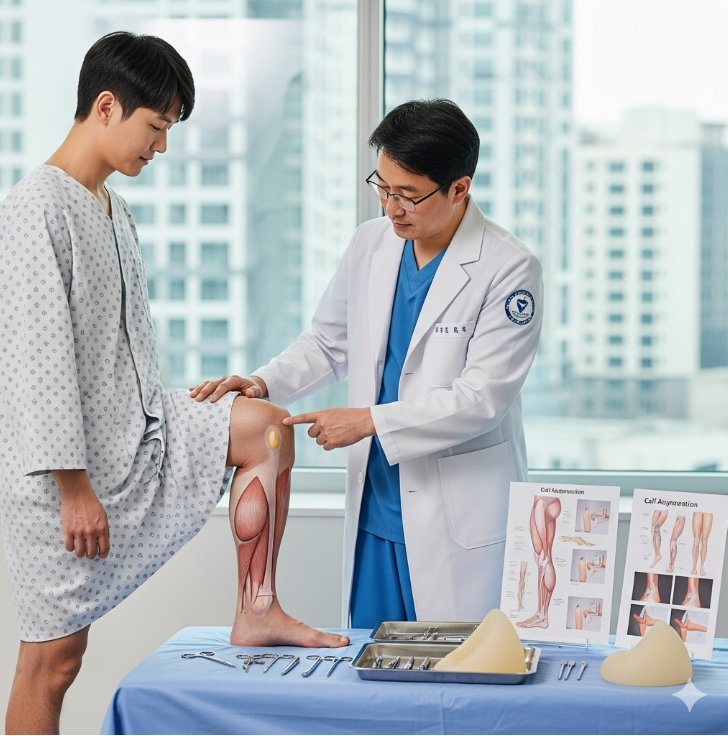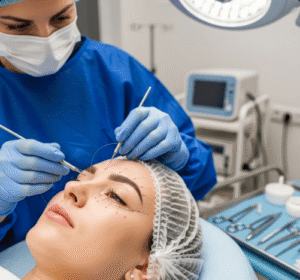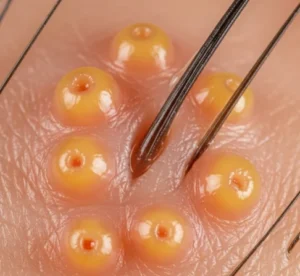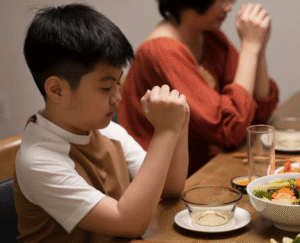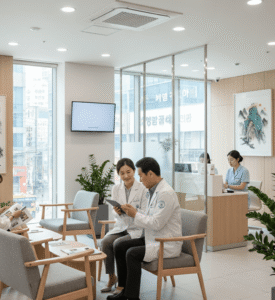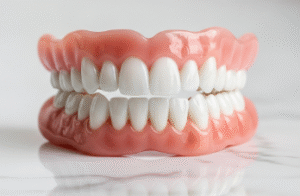What It Is
Calf implant surgery, also called calf augmentation, is a cosmetic procedure that enhances the size, shape, and definition of the calf muscles using silicone implants. This surgery is designed for patients who want more muscular or proportionate lower legs but cannot achieve the desired look through exercise alone.
The implants are made of soft, medical-grade silicone and are inserted into pockets created within the calf, giving a natural yet fuller appearance. This procedure is popular among both men and women seeking either athletic definition or balanced leg proportions.
Why It’s Done
Patients choose calf implants because:
- They have naturally slim or underdeveloped calves that do not respond to exercise.
- They want more muscular definition for a balanced athletic look.
- Asymmetry exists between the two legs due to genetics, injury, or medical conditions.
- They want to improve body confidence when wearing shorts, skirts, or swimwear.
Good candidates include:
- Men and women with thin or asymmetrical calves.
- Patients at a stable weight and in good health.
- Individuals with realistic expectations for enhancement.
Alternatives
- Fat grafting: Uses the patient’s own fat to add volume to the calves. While natural, results may be less predictable and require touch-ups.
- Exercise (calf training): Can improve muscle definition but may not significantly change calf size for those with genetic limitations.
- Non-surgical fillers: Hyaluronic acid injections can add temporary volume, but results last only months to a year.
Preparation
Before calf implant surgery in Korea, patients will:
- Have a consultation to determine implant size, shape, and placement.
- Undergo bloodwork and medical evaluation.
- Stop smoking and alcohol at least 4 weeks before surgery.
- Avoid blood thinners and certain supplements.
- Prepare for 1–2 weeks off work and limited physical activity during early recovery.
How It’s Done
- Anesthesia: Typically performed under general anesthesia.
- Incision: A small incision is made in the crease behind the knee, keeping scars discreet.
- Implant placement: Silicone implants are placed under the fascia (the connective tissue covering the muscle) or sometimes within the muscle itself for a more natural appearance.
- Symmetry check: Both calves are carefully shaped to ensure balance.
- Duration: 1.5–2.5 hours, usually performed as an outpatient procedure.
Recovery
- First week: Swelling, bruising, and tightness in the calves are common. Walking may be uncomfortable but is encouraged for circulation.
- Compression garment: May be worn to minimize swelling and support healing.
- Return to work: Most patients return to non-strenuous work within 1–2 weeks.
- Exercise: Gentle walking is encouraged early, but strenuous activity and leg workouts are avoided for 6–8 weeks.
- Results: Visible immediately after surgery, with final contour settling after 2–3 months.
Possible Complications
- Temporary bruising, swelling, or numbness.
- Implant shifting or asymmetry.
- Scarring behind the knee (usually minimal and hidden).
- Rare risks: infection, capsular contracture (scar tissue tightening around the implant), or implant rupture.
Treatment Options in Korea
Diagnosis
Korean surgeons evaluate calf size, symmetry, and overall leg proportions. 3D imaging may be used to help select the most suitable implant size and shape.
Medical Treatments
For patients who prefer non-surgical options, fat grafting or filler injections may be considered, though results are temporary or less defined.
Surgical or Advanced Therapies
- Calf implants for permanent enhancement of size and definition.
- Combination with fat grafting for a softer, natural look around the implant.
- Advanced techniques in Korea emphasize minimal incisions and precise implant placement for natural results.
Rehabilitation and Support
- Scheduled follow-up visits to monitor healing and implant positioning.
- Scar management therapies such as silicone sheets or laser.
- Lymphatic drainage massage to reduce swelling and stiffness.
- Multilingual aftercare support for international patients in Korean clinics.

